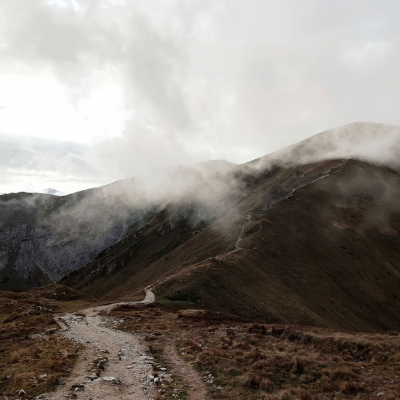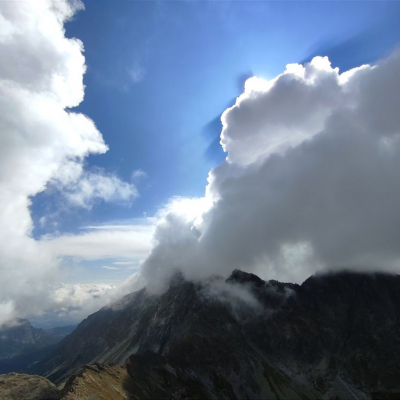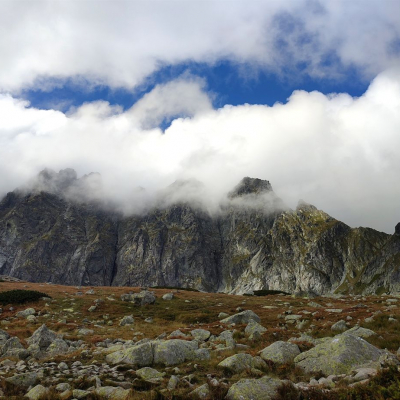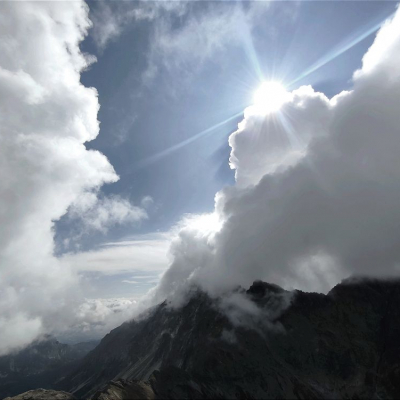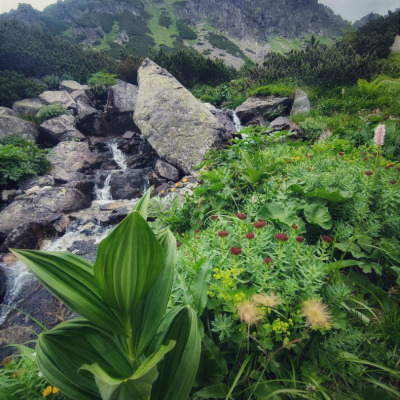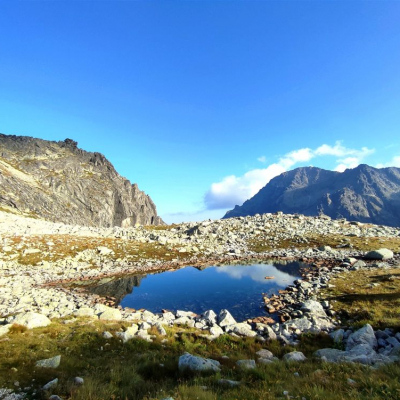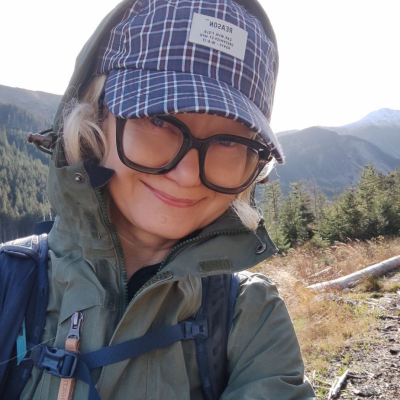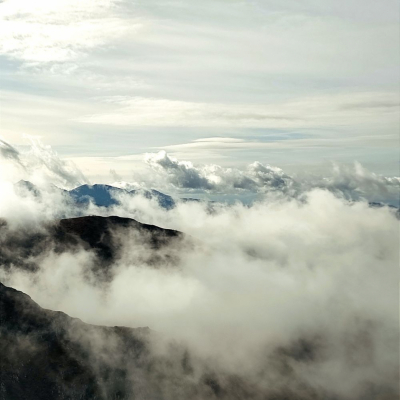Katarzyna Szmaglińska, PhD, has worked at the Department of Philosophy and Bioethics at the Faculty of Health Sciences in Katowice for 17 years. She holds a doctorate in philosophy and teaches research methodology and bioethics. She is interested in the philosophical assumptions of psychotherapeutic concepts, however, V. E. Logotherapy is the closest to her. E. Frankl's logotherapy (a psychotherapy focused on meaning and values). She is also a member of the Polish Association of Logotherapy and Neo-Psychosomatics and has completed the Logotherapy Study accredited by the Viktor Frankl Institute in Vienna.
After finishing her work, she doesn't lock herself in her home pile, but plans high-mountain excursions. - My passion for more than 20 years has been mountain hiking and, completely amateurishly, photography. The adventure began with the Beskids. However, nowadays, during autumn, winter and spring, I usually go to the High Tatras, and during holidays further afield, to the Alps in Italy or Austria," explains Dr Szmaglińska. And she adds: - I like the mountains most in winter. I share this passion with my best friend from university. We usually go together, but we walk separately. That is, we each climb the peaks at a different pace.
Silence opens you up to the mysticism of the mountains and, through contemplation, transports you into another dimension
For Dr Szmaglińska, solitary hiking is of great value. During the expedition, she can meditate, calm down and meet herself with her fears, her weaknesses but also her endurance and strength. She always emphasises that it takes a lot of self-denial and a kind of metaphysical hunger and desire for something bigger than ourselves to hike in this way. - The beauty of the mountains is different every time. Mountains melted in the sun, at sunrise or sunset, in the rain or in a snow blizzard teach incredible humility and allow, in the event of some inner crisis, to reorder the hierarchy of values," reflects Dr Szmaglińska.
In the face of their majesty, the human being, with all his or her daily weaknesses and pains, seems simply insignificant and small. And while struggling against the elements, he is at the same time so close to nature, united with the forces of life and resilient that it restores a sense of connection with the World and provides a new, inspiring perspective from which to look at the value and meaning of one's life.
My passion has a strong connection to my work and logotherapeutic interests
Mountains open us up to the metaphysical dimension of our existence, they offer self-knowledge, especially in extreme situations, and they also reveal vast layers of freedom and agency. They have an initiatory and self-therapeutic effect, but of course they are dangerous. Before embarking on a mountain adventure, it is advisable to do a bit of reading or listen to the stories of experienced hikers. Endurance and technical preparation are also important. - In my rucksack, depending on the season, there is always a map, a raincoat, a headlamp, a heat-insulating seat, a cap with a visor, an extra outer garment if, for example, I get cold on the summit, as well as a thermos with warm tea, an appropriate amount of drinks (with which I replenish my electrolytes) and calorific snacks," explains Dr Szmaglińska. She adds: - For a full-day expedition, when I won't be passing shelters, I take more food with me. In winter, of course, in addition to extra warm clothes, a sweatshirt, socks, gloves for a change, an ice-check, crampons or crampons, a stiletto, a winter balaclava, necessarily with a professional mask to prevent frostbite around the nose and mouth, with a suitable material and an opening to let the vapour escape to the outside.
Suitable, thermally insulated clothing and shoes with a suitable sole to protect the ankles are also of considerable importance. The right clothing and equipment preparation is very important when hiking in the mountains in winter. Especially when it is minus temperatures at the summit, often compounded by freezing, face-cutting snow and gusty winds.
Difficult conditions in the mountains are not the only danger. Wild animals such as bears can be encountered on the trails. It is important to know how to behave in the face of such an encounter (there is specialist advice on Tatra portals, but the most important thing is not to frighten or irritate it, but to withdraw slowly if possible). It is also a good idea to speak in a calm voice to draw the animal's attention to our presence, without the unnecessary element of surprise, which could be our cries of terror or sudden movements. A bear noticing us is more likely to retreat, but if it is frightened by us, it may also react violently. It is important to remember not to take scented treats with you. Bears have an excellent sense of smell, so an egg sandwich will be an incentive for them to follow the hiker and perhaps even accost him.
Photographing in the mountains
Through photography, Dr Szmaglińska is able to share the beauty of mountain views. In order to reach a wider audience, she has been running a social media channel since July (Instagram: Takie tam i inne @takietami). However, she is most fond of recording short videos from the summits, in which she can show in motion the beautiful spectacles written by the clouds or mists moving among the peaks.
- My photography is very intuitive. In truth, in the mountains there is usually no time for setting up, posing, etc. But if I were to reconstruct what I pay attention to, however. It is first and foremost what is important that we specifically want to show. This should take up the most space in the frame, so you need to make sure you have the right perspective - and we tend to locate everything in the frame in the middle of the photo. It is worth remembering that we see differently than the camera does, we perceive the world with more senses. That's why it's worth looking through the "eye of the camera" for a while and looking for a good perspective. Move around, zoom in, up, down and see what the view in front of you looks like. Then you can choose the most interesting shot that reveals the magic of the place. It is worth consciously looking for the foreground, background or background, to find the strong points, that is, something specific that appears in the frame. If one is less intuitive, it can be helpful to cognitively harmonise the photograph, to give it a name, a theme. With a photograph you can not only convey the mood of the moment, but also tell a story. If there are lines in the frame, for example a fence seen in the distance, running from right to left, the right shot will hold the viewer's attention, but then lead him or her further along this very line. Then you can lead someone to the place in the frame that was most important to you and show a more or less symbolic path in space.
- What would I say to someone who has not yet found their passion? Passion is most about finding ourselves, what gives us joy, the strength to live. Our passion may not be fully understood by anyone else. My friends are still amazed that I want to put in so much effort and exposure to difficult weather conditions. And it is in and through passion that one finds the strength to do so much more," encourages Dr Szmaglińska.
